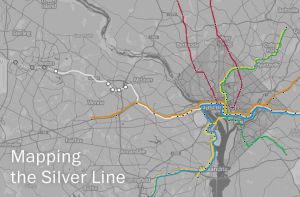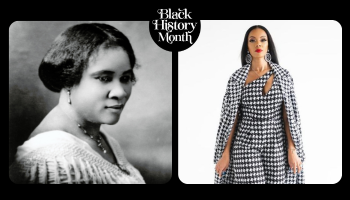
The Silver Line opens July 26, 2014
Excerpted from The Washington Post
Among the many hundreds of reports written over the last half-century by the planners who conceived and designed Metro’s ever-growing rail system, there was a study dated Nov. 1, 1962, a few weeks before the first commercial jet took off from newly opened Dulles International Airport.
Signed by a transportation official in the Kennedy administration named C. Dalton Stolzenbach, the document, delivered to Congress, included a geographic layout for a dreamed-of regional rail system that looks a lot like today’s Metro subway map — but with no trains running through the then-sleepy area of Tysons Corner to the rural western edge of Fairfax County.
Nothing like Metro’s new Silver Line — which the agency announced Monday will open for passenger service on Saturday, July 26 — was in the forefront of anybody’s mind in the gestation years of rapid transit in the nation’s capital.
A rail line to Dulles “would depend almost entirely on airport and tourist patronage; it would carry virtually no commuter traffic and therefore make no contribution to the solution of the peak hour congestion” on Washington-area roads, the 1962 report said. “The more logical” rail route, eventually, would be through “the most heavily populated areas of Arlington and Fairfax,” meaning, back then, Rosslyn to Vienna, the modern Orange Line.
Rep. Gerald E. Connolly (D-Va.), who fought for the Silver Line on Capitol Hill and, before that, as a member of the Fairfax County Board of Supervisors starting in 1995, has a copy of Stolzenbach’s report in his digital files, a nostalgic keepsake to pull out and look at from time to time, like an old baseball card.
“Imagine that, 52 years ago!” he said. Recounting the Silver Line’s tortuous history — including a recent decade of often bitter, convoluted political warfare during which the project nearly died more than once, then five years of overbudget, behind-schedule construction of the rail line’s soon-to-open, $2.9 billion first phase — Connolly said, “It’s a morality tale, in a sense, about how really hard it is to get big things done.”
In 2006, former Fairfax supervisor and U.S. Rep. Thomas M. Davis III (R) and a fellow Northern Virginia Republican, U.S. Rep. Frank R. Wolf, warned then-Gov. Timothy M. Kaine (D) that the idea of moving the rail line underground in Tysons put the project’s future in grave jeopardy. And Kaine soon announced that the tunnel plan was off the table.
“Getting through those years was a chore,” said Connolly. “I mean, those were really hard years. We had to just simply tough it out. And we did.”
Schrag, the Metro historian, wonders what might have been.
“If you go out to the new Spring Hill station on the Silver Line, for instance, it’s surrounded by automobile dealerships,” he said, referring to one of the four new stations in Tysons. “If that station opened, say, in 1985, where there are now a lot of car dealers, you’d see, I think, some buildings that really took advantage of the Metro. Now it’s going to be decades, most likely, before we see that kind of thing.”














